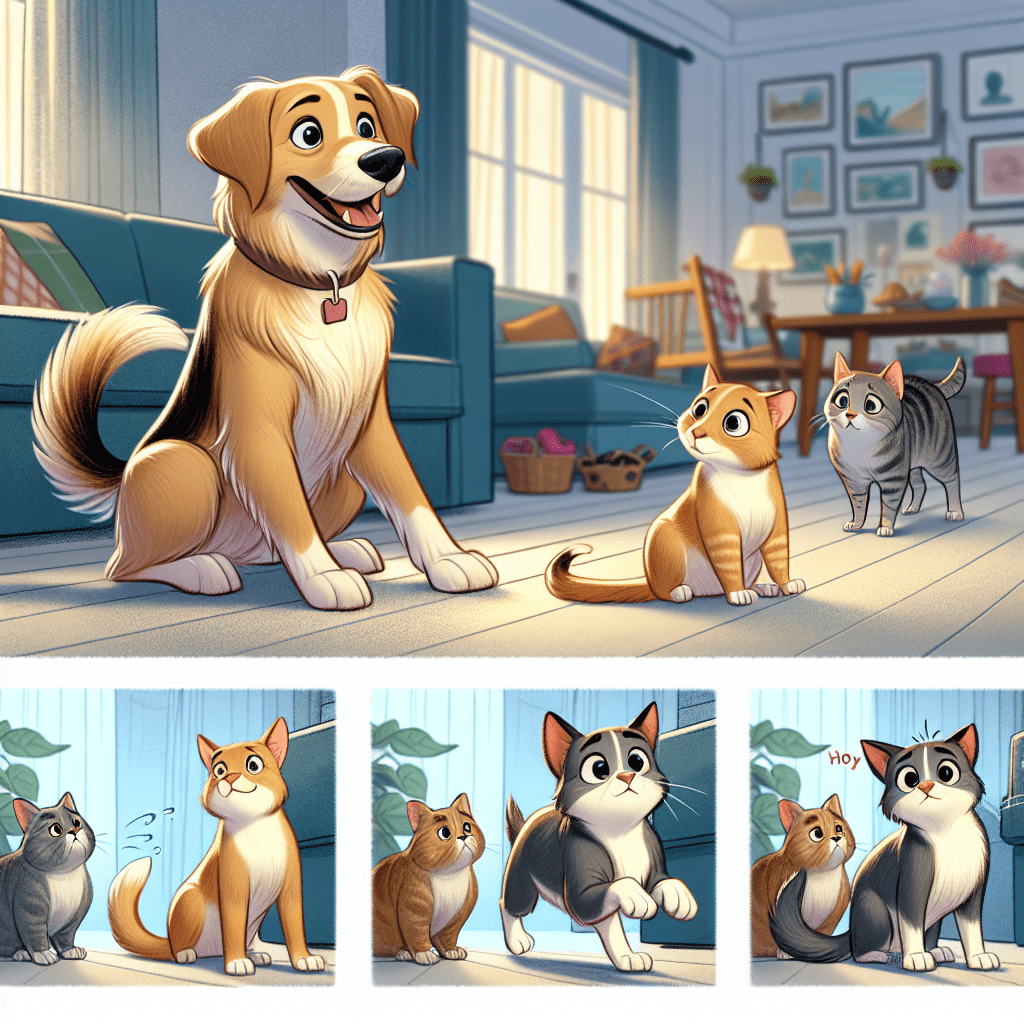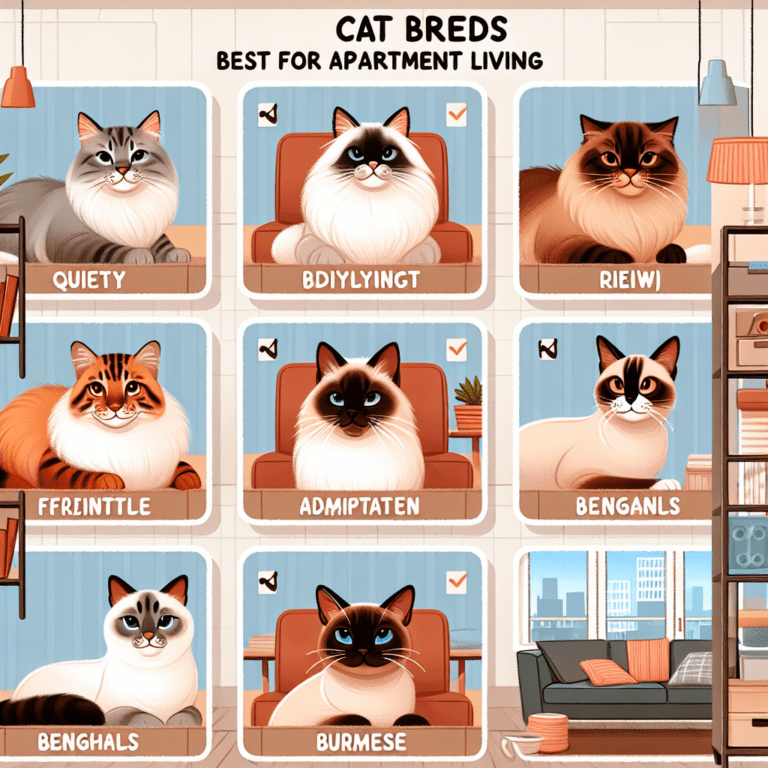
Furry Friends: Steps to a Smooth Introduction Between Dogs and Cats
Furry Friends: Steps to a Smooth Introduction Between Dogs and Cats
As a devoted dog lover, there’s nothing I enjoy more than scrolling through endless adorable dog photos or hearing the joyful barks of my furry friends as they romp around in the backyard. However, the canine world is not solely reserved for dogs; it includes our feline friends too! Cats and dogs can become the best of friends if introduced properly. While it may seem like a crazy thought to bring a dog and a cat under one roof, with the right approach and care, this adorable dream can become a reality. In this blog post, we’ll explore a step-by-step guide to ensure a successful introduction between dogs and cats.
Chapter 1: Understanding Canine and Feline Behavior
Before we dive into how to make this introduction smoother, it’s essential to grasp the fundamental differences between our two pals. Dogs are social creatures who thrive on companionship and often crave human interaction. They’re fueled by affection and approval, generally displaying overt behaviors like playful barks and wagging tails.
On the other hand, cats are often more independent. They value their personal space and can sometimes take their time warming up to new animals. Understanding these behaviors can help set the stage for a positive introduction. It’s important to recognize that the dog’s energy can be overwhelming for a cat, and for a dog, a cat’s aloofness might seem standoffish.
Chapter 2: Preparing Your Home Environment
The journey begins right at home. Consider creating a safe zone for each animal. This is particularly crucial for your cat, who might feel threatened by the dog’s robust energy. Use baby gates if necessary, and allocate a quiet space where your cat can retreat to.
Also, ensure that both animals have separate feeding locations, litter boxes, and sleeping areas. This separation minimizes competition and territorial behavior, which is vital during the initial stages of the introduction.
Chapter 3: The Initial Meeting – Scent Introduction
Once you’ve established separate spaces, the next step involves getting them acquainted through scent. Our furry friends primarily understand the world through their noses, so it’s essential to introduce them through scent before the big meeting.
You can swap bedding or toys that each animal has used. Let your dog sniff at the cat’s bedding or vice versa. Alternatively, gently rub a cloth on one animal and then allow the other to smell it later. This helps them become accustomed to each other’s scent and can ease the tension when they finally meet face to face.
Chapter 4: Controlled Meetings
The moment has arrived for the first visual meeting! This step must be handled with care. Always have your dog on a leash during these initial encounters. This gives you control over the situation, keeping both pets safe and less anxious.
Start the meeting at a distance where both animals can see each other without feeling threatened. Ideally, this should be in a neutral area, as it reduces territorial feelings. Observe their body language; if either pet shows signs of aggression or distress, give them some time apart and try again later.
Chapter 5: Positive Reinforcement
Both dogs and cats respond well to positive reinforcement. Use treats to reward calm and well-behaved reactions during the introduction phase. If your dog remains calm when seeing the cat, praise them and offer a treat. If your cat displays curiosity without signs of fear or aggression, the same applies—reward them!
Building a positive association is critical. The goal is for both pets to connect the presence of the other with positive experiences. Avoid scolding either animal, as this could create negative associations and setbacks in your process.
Chapter 6: Gradually Increase Interaction Time
Once the initial scary moments are behind you, gradually increase the amount of time the animals spend together. Depending on their reactions, you can allow the leash to be loosened if your dog seems calm and adjusted. Always supervise these interactions until you’re confident they can coexist peacefully.
More shared experiences can help bolster their relationship. Playing with toys that both animals can enjoy together or having them in the same room while engaging in separate activities can deepen their comfort levels with one another.
Chapter 7: Respect Their Boundaries
It’s crucial to respect the boundaries of your furry friends. Their comfort should always take precedence. There will inevitably be moments where one animal might become overwhelmed or need a break. Always provide a safe space where either pet can retreat without feeling cornered or unsafe.
If the dog is very playful and the cat is sensitive, allow the cat to dictate the pace. Set a slow and steady rhythm for any interactions, acknowledging when it’s time to step back or give them space.
Chapter 8: Continuous Monitoring and Adjustment
Even after a successful introduction, your work isn’t done! Pets may continue to evolve in their relationship over time. Monitor their interactions continually, adjusting your approach as required. There will be ups and downs, but with love and patience, you can cultivate a beautiful friendship between your dog and cat.
Engage in training for your dog, reinforcing commands that promote good behavior in their presence. It can also be helpful to avoid leaving them unsupervised until you can completely trust their behavior together.
Conclusion
Introducing a dog and a cat can be one of the most rewarding experiences for pet lovers. It may seem daunting, but with the right mindset and approach, your household can become a happy haven for both species. The key is to tread lightly, taking steps to understand their behaviors and feelings while creating a supportive environment. By providing positive experiences, respecting their boundaries, and continuously monitoring their progress, a harmonious relationship can flourish — like two best friends sharing a space filled with love.
Creating a multi-pet household may require patience and effort, but the joy and companionship that emerge are ultimately worthwhile. After all, who wouldn’t want to witness a dog and cat cuddled up together, surefire signs of future furry friendships?
FAQs
Q1: How long does it take for a dog and cat to get used to each other?
A1: The time varies greatly based on the individual animals’ personalities. It can take a few days to several weeks. Monitor their interactions closely and adjust the introduction process based on their comfort levels.
Q2: What if my dog is very aggressive towards my cat?
A2: If aggression arises, it’s important to separate them immediately and revisit the introduction process at a slower pace. Consulting a professional trainer or animal behaviorist may also be beneficial.
Q3: Can my cat and dog ever be left alone together?
A3: Only once they have shown consistent calm and friendly behavior towards each other will you be able to leave them unsupervised. Always give it time and confidence-building, watching for any signs of stress or aggression.
Q4: Should I use a crate for my dog when introducing them to my cat?
A4: Yes, a crate can be a useful tool during initial introductions. It allows the dog to observe the cat without direct contact, giving you control over the environment.
Q5: Will my animals ever be friends?
A5: Many dogs and cats can develop positive relationships and actually grow to be best friends! It often requires a lot of patience, along with positive reinforcement and understanding of their individual personalities.
Unlock the Secrets to a Well-Behaved Dog! 🐾 Tired of your pup’s bad habits? Discover how to transform your unruly dog into a loving companion with our FREE Dog Training Mini Course! Learn essential commands, potty training tips, and effective techniques to eliminate unwanted behaviors in just days. Don’t miss out—sign up now and start your journey to a happier, obedient dog! Join Here! (https://bit.ly/3RJak0a)
Instantly Access Your Free Children’s Books Here! (https://payhip.com/BlueCherryStore) – Disclaimer: As an Amazon Associate, I earn from qualifying purchases; I may earn a commission from qualifying purchases as an affiliate. Please note that I only recommend products I believe will provide value to my readers. (M)







